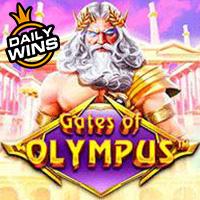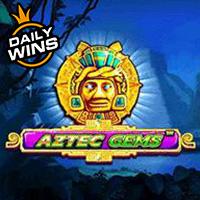

















The relationship between urban environments, historical context, and investment strategies is complex yet profoundly influential. Cities are more than just clusters of buildings; they embody economic, cultural, and social narratives that shape investor perceptions and behaviors. Understanding these dynamics is vital for anyone looking to navigate modern investment landscapes effectively.
Table of Contents
- The Interplay Between Urban Landscapes and Investment Trends
- The Role of Urban Views in Shaping Investment Perception
- Historical Context as a Foundation for Modern Investment
- Modern Investment Strategies Influenced by Urban and Historical Factors
- Psychological and Social Dynamics in Urban Investment Environments
- Non-Obvious Factors Shaping Modern Investments
- Future Trends: Evolving Urban Views and Historical Appreciation
- Conclusion
The Interplay Between Urban Landscapes, History, and Investment Trends
Urban environments significantly influence economic behavior by shaping perceptions of safety, opportunity, and desirability. A city’s layout, infrastructure, and aesthetic appeal create an atmosphere that can either attract or deter investment. For example, revitalized downtown districts often see a surge in property values and commercial activity, driven by urban renewal initiatives that enhance visual appeal and functional infrastructure.
Historical context further deepens this influence. The preservation of architectural heritage not only maintains cultural identity but also boosts real estate values. Investors recognize that historic districts often command premium prices due to their unique charm and established infrastructure, which modern developments may lack. This symbiosis of environment and history informs strategic decisions, emphasizing the importance of location and legacy.
Perception, shaped by environment and history, impacts investor confidence and decision-making processes, underlining the importance of understanding urban narratives when evaluating opportunities.
The Role of Urban Views in Shaping Investment Perception and Behavior
Cityscapes influence investor confidence by providing a visual context that signifies growth and stability. A well-maintained skyline or scenic waterfront can elevate perceptions of value and reduce perceived risks. Conversely, urban decay or poorly maintained areas may lead to hesitance among investors.
Psychologically, urban aesthetics impact desirability and valuation. Studies show that attractive city views correlate with higher property prices and increased demand. For instance, urban renewal projects that enhance parklands, lighting, and architectural cohesion often result in increased local investments, as they boost the neighborhood’s overall appeal.
An illustrative case is the transformation of waterfront districts into vibrant urban hubs, which has historically led to a substantial rise in real estate investments, commercial growth, and community engagement.
Historical Context as a Foundation for Modern Investment Opportunities
Historical infrastructure and architecture serve as tangible assets that underpin current property values. The durability and uniqueness of historic buildings often translate into higher valuations, especially when they are integrated into contemporary urban planning.
Moreover, historical trends inform current market cycles. For example, periods of urban decay followed by revitalization have created cyclical investment opportunities. The revitalization of historic districts, such as the Warehouse District in many cities, attracts modern investors seeking both aesthetic charm and cultural value—creating a synergy that drives growth.
This approach not only preserves cultural heritage but also stimulates economic activity, making historical districts attractive for contemporary investments.
Modern Investment Strategies Influenced by Urban and Historical Factors
Investors today increasingly incorporate urban planning insights into their portfolios. Diversifying across areas with different urban characteristics can mitigate risks and capitalize on growth hotspots.
Cultural heritage and historical significance add intrinsic value to properties. For example, properties within historically designated zones often benefit from preservation incentives and attract tenants or buyers seeking unique environments.
A modern illustration of leveraging urban and historical themes is seen in game design and product aesthetics. Consider monopoly themed live casino. Its design choices, such as gold accents, have been shown to increase perceived value by up to 52%, demonstrating how aesthetic elements rooted in urban luxury and historical opulence can influence consumer and investor appeal.
Psychological and Social Dynamics in Urban Investment Environments
Live presentations and real-time data significantly impact investor trust. For instance, trust ratings can increase by as much as 67% when credible data is transparently shared, fostering confidence in urban projects.
Social proof, such as community endorsements or visible urban improvements, influences individual decisions. Investors are more likely to commit capital when they observe widespread support and positive urban narratives.
Narratives that highlight historical storytelling, such as the preservation of iconic landmarks, can boost consumer engagement and elevate perceived value, ultimately driving investment inflows.
Non-Obvious Factors Shaping Modern Investments
One subtle yet powerful concept is the exponential growth effect. Doubling investments multiple times can lead to dramatic increases—for example, investing ten times can result in a 1,024-fold growth, which is particularly relevant in urban development projects where scaling opportunities abound.
Aesthetic perceptions and perceived value also play a critical role. Products and properties that visually evoke urban sophistication or historical richness tend to attract higher investments, even if their intrinsic value remains unchanged.
A case study is the design of products like Monopoly Big Baller, where urban and historical themes are integrated into aesthetics to appeal to modern investors seeking both nostalgia and luxury, thereby increasing market appeal.
Future Trends: Evolving Urban Views and Historical Appreciation
The advent of smart cities, integrating IoT and AI, opens new investment opportunities by enhancing urban efficiency and livability. These technological advancements attract forward-thinking investors looking for innovative urban environments.
Balancing preservation and innovation remains a core challenge. Cities must find ways to maintain historical authenticity while embracing modern urban development, which can influence marketing strategies and product design—mirroring how aesthetic choices in products like Monopoly Big Baller reflect urban themes.
Such trends suggest a future where urban views and historical narratives are central to branding and investment decisions, fostering sustainable growth and cultural continuity.
Synthesizing Urban Views and History to Foster Informed and Strategic Investments
In summary, urban landscapes and historical contexts are more than mere backdrops—they are active catalysts in shaping investment behavior. Recognizing how environment, perception, and legacy influence value allows investors to make more informed decisions.
Practical application involves analyzing urban renewal projects, leveraging historical assets, and understanding aesthetic influences—like how the visual appeal of products such as monopoly themed live casino can sway consumer perception and investment.
“Perception is reality in urban investment; environments and history shape that perception profoundly.”
Ultimately, understanding the synergy between urban views, history, and investor psychology will define the future landscape of successful investments.
